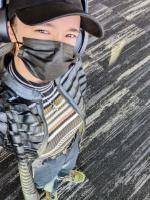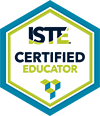The Power of Experiential Learning: Transferring Learning Beyond Classroom Walls
,
Presenters




Session description
Purpose & objective
Creating effective Experiential Learning design requires some infrastructure in place a the school, such as legal approval for off-site learning, flexibility in school schedule, and autonomy in creating custom learning design and assessment to align to standards or content goals in a creative way.
Our school uses Surfaces with digital ink that are mobile and support learning in flexible environments and settings. The benefit is a setting to support practice navigating ambiguity and living responsibly in community settings.
Criteria, outlines and templates are included with exemplars in the Wakelet Collections.
Outline
I will set the context for the purpose of Experiential Learning, how we define it, and how it can tie into interdisciplinary learning while supporting social and emotional learning and life-skills.
10 minutes.
5 minutes
I will provide several examples of interdisciplinary content as part of experiential learning and then turn the discussion to student presenters who will spend the next 35 minutes sharing the process of co-designing criteria and peer-and self-assessment forms, what it looks like to engage with technology and the Experiential learning outside the classroom, and the skills they developed through the process.
I will end with links to Self-Determination Theory and how establishing relatedness, autonomy and competence can facilitate intrinsic motivation to persist even when challenges appear to be obstacles. This method has supported long-lasting curiosity that extends beyond the classroom and supports interest development.
Supporting research
https://experientiallearninginstitute.org/resources/what-is-experiential-learning/
https://wakelet.com/wake/-XzlZe9Lx97vmr30DxKrr
Session specifications
Laptop: Mac, PC, Chromebook
Tablet: iOS, Windows, Android
Empowered Learner
- Students build networks and customize their learning environments in ways that support the learning process.
- Students curate information from digital resources using a variety of tools and methods to create collections of artifacts that demonstrate meaningful connections or conclusions.
- Students exhibit a tolerance for ambiguity, perseverance and the capacity to work with open-ended problems.
 Return
Return Listen and learn: Edtalk
Listen and learn: Edtalk  Trips and Tours
Trips and Tours Recorded Session
Recorded Session Virtual Session
Virtual Session